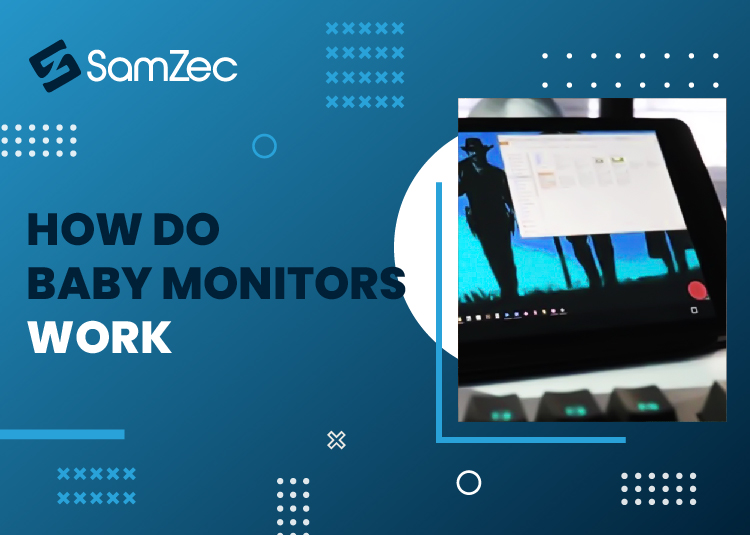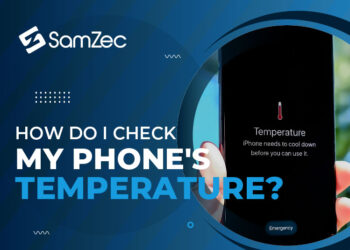How do baby monitors work? The short answer is that it depends on the monitor you are using. Several different types of monitoring devices are available today, including some new ones on the market that are more advanced than what was available even a few years ago.
The two most common types of devices are analog and digital. The way they both work is by sending an audio signal from your nursery to your receiver (monitor), which then sends the sound to the speaker in your room or to a parent unit that can be carried around with you throughout your home.
A third option gaining popularity among parents is video monitoring, which some see as unnecessary because many parents already have phones capable of taking pictures and videos. However, there are plenty of incidents in which a caregiver will talk to or sing to a crying baby, and the noise is not heard by anyone else in the house.
Analog
The term “analog” refers to how the signal is transmitted via radio waves from your nursery to your receiver. A transmitter and receiver can be combined in one device, or they can be two separate devices that communicate wirelessly across a certain range (usually around 300 feet).
These monitors work on the same frequency as most cordless phones, which means there may be some interference due to various devices working on similar frequencies.
Digital
The term “digital” refers to how the signal is transmitted via infrared light from your nursery to your receiver. A transmitter and receiver can be combined in one device, or they can be two separate devices that communicate wirelessly across a certain range (usually around 900 feet).
These monitors usually have a higher price tag than analog monitors because they use digital technology, which is more expensive to produce.
Video Monitors
Some parents are choosing to forgo traditional audio-only monitors instead of opting for video monitors, which give a visual image of your baby. These monitors often come with two lenses (one for day and one for night), an inside camera that can pan, tilt, and zoom in and out, and some include temperature sensors.
How Safe Are They?
Today’s major concern is whether or not modern technology is safe to use around their children. Because many different devices emit radiation, such as cell phones and microwaves, the question arises if it’s okay to monitor babies with these same types of devices.
How do you choose?
Now that you know the difference between the two types of devices and some features offered with each type, you can determine which monitor will suit your needs best. One factor may be budget; if money is tight, an analog monitor will work just fine for most parents.
If you are looking for a device that offers extra features at a lower price point, consider purchasing a digital monitor. Not only are they easy on the wallet, but they offer many of the same benefits as higher-end monitors found in department or electronics stores.
Another thing to consider is interference. If you are in a home with many devices that emit radiation (such as a cordless phone, microwave, or Wi-Fi router), it might be best to avoid an analog monitor and go for a digital one. Otherwise, you may experience interference and poor sound quality.
Some parents opt for video monitors simply because they want to see their child at all times, day or night. If this is important to you, make sure the device you choose comes with infrared technology so you can see your baby even in complete darkness.
Conclusion
And finally, if you are looking for a monitor that will grow with your child, consider one with an expandable range or one that allows multiple cameras to be hooked up. This way, as your child gets older and the nursery is transformed into a toddler’s room, you don’t have to worry about losing signal strength or sound quality as you increase the range.
FAQs
Do baby monitors work on Wi-Fi?
No, not typically. Most new baby monitors use a 2.4GHz frequency to transmit audio and video signals between the monitor and receiver. Though some devices offer both Wi-Fi and RF technologies, it is usually only available on more advanced models.
Are baby monitors safe?
The consensus is that baby monitor are safe to use as long as you are careful about placing the monitor. The American Academy of Pediatrics recommends taping down or removing any cords on the device to limit your child’s access.
If you choose a video option, make sure to turn off night vision, so your little one isn’t exposed to excess light. And finally, if you are worried about radiation exposure, consider purchasing a device that emits lower radiation levels.
Can I use my cell phone as a baby monitor?
Yes! Many companies offer apps for both Android and iOS devices that allow parents to use their phones as baby monitors. These apps often have extra two-way communication, lullabies, and night vision.
Can I use my iPad as a baby monitor?
Yes! Like cell phones, there are a variety of apps that allow parents to use their iPads as monitors. These apps typically have the same features as phone apps, but some also offer the ability to record videos or take pictures of your child.
Will a baby monitor work through glass?
It is not recommended to use a monitor with glass between the camera and receiver. If you need to use a device with an LCD screen, consider purchasing an infrared device so you can see your child without any interference.




















